Yogyakarta: A Popular Destination for Holidays and Living – How Healthy is the Air Quality?
Who doesn't familiar with Yogyakarta? A cultural city known as one of Indonesia's tourist destinations, as well as a center of education, classical Javanese art, and culture such as batik, theater, poetry, and puppet shows, Yogyakarta is always bustling with tourists, both local and foreign. But what about the air quality in Yogyakarta? Is it 'safe enough' for tourists and the residents?
Nafas has installed several sensors that measure fine particulate matter, PM2.5, which is a pollutant in the air. The first Nafas sensor was installed in the city on January 12, 2021.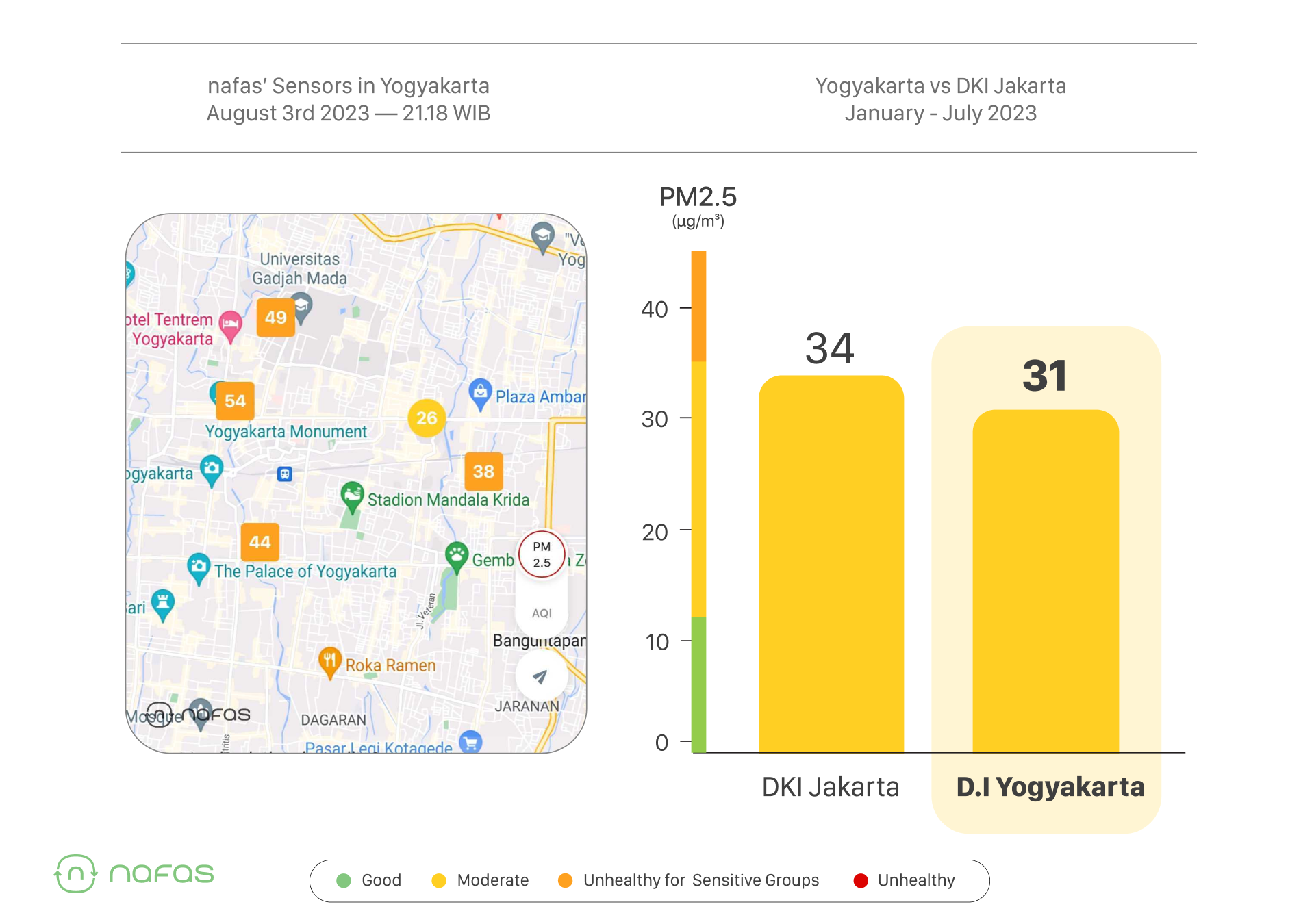
In this article, the Nafas team has summarized the air quality data in Yogyakarta. Let's check the air quality data out together!
How 'bad' is Yogyakarta's air quality?
It seems that the air quality in Yogyakarta is not too troubling and is still breathable. Take a look at the graph below! The blue line shows the PM2.5 concentration in Yogyakarta, while the black line shows the PM2.5 concentration in DKI Jakarta.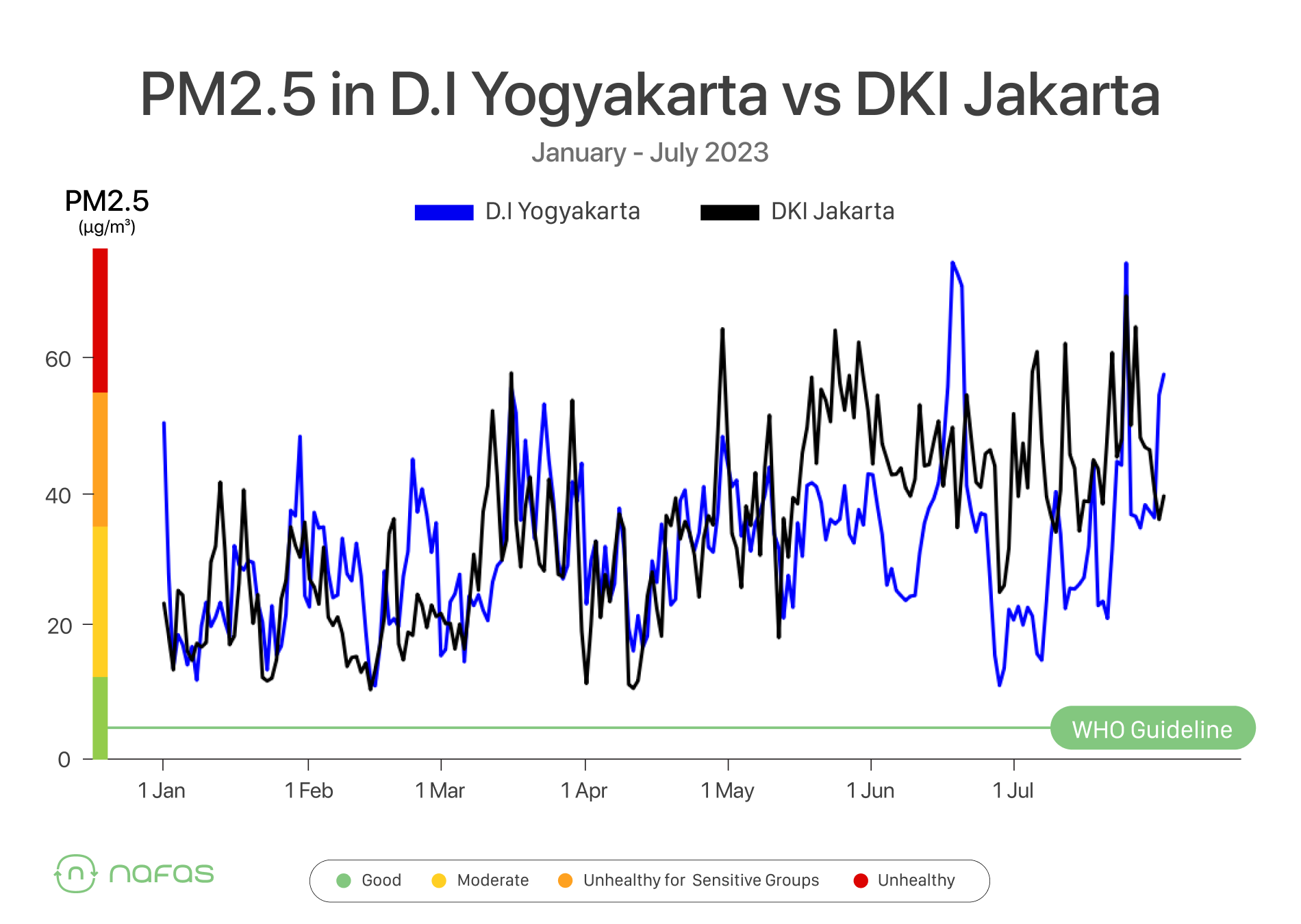
Luckily, the air quality of this tourist-favorite city is quite good throughout 2023. When compared to DKI Jakarta, Yogyakarta has better air quality with its PM2.5 concentration at 31 µg/m3, lower than in DKI Jakarta. However, the amount of pollution is observed to fluctuate and tends to increase from June to July.
Now, check out the graphic below!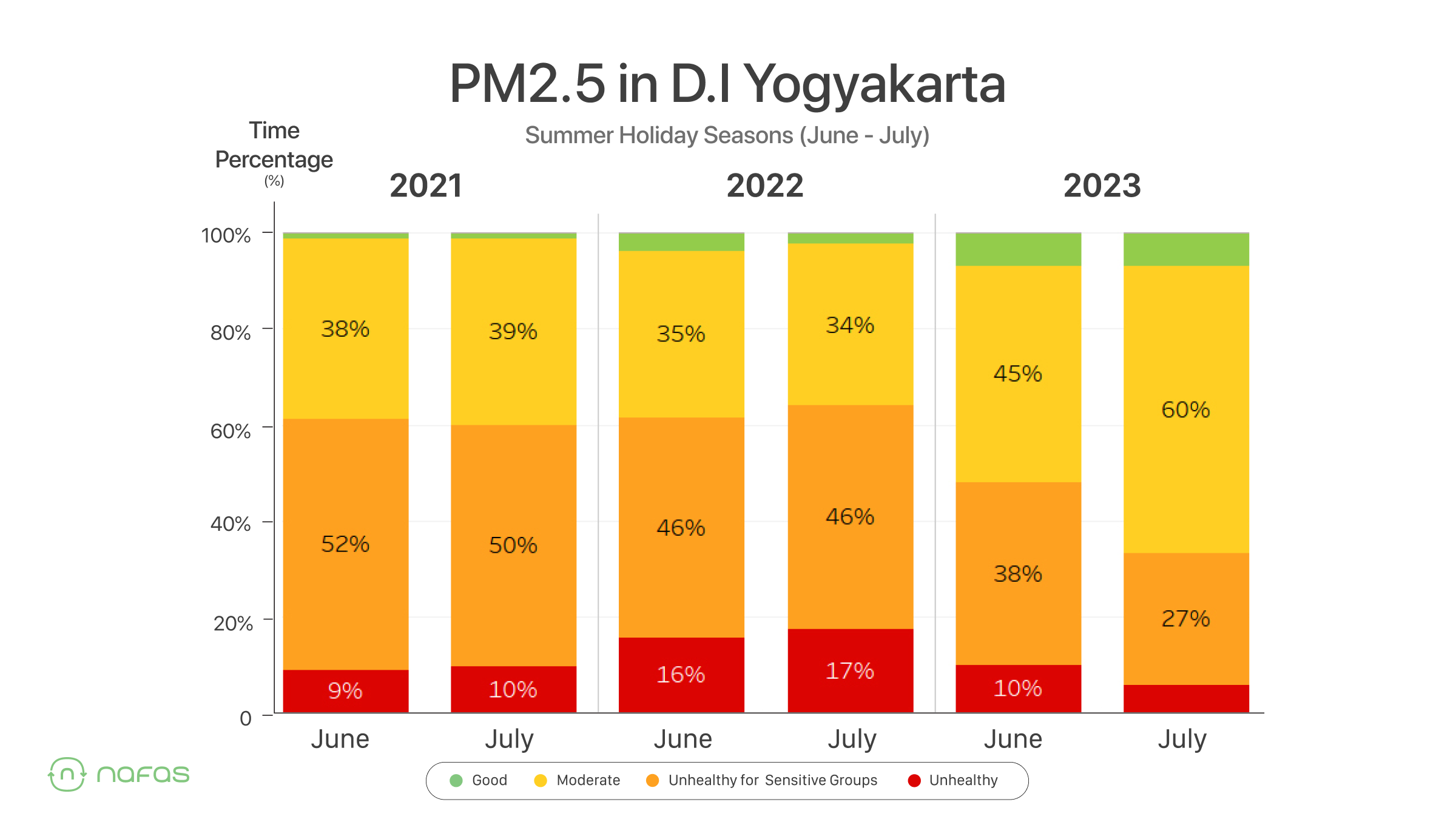
Mid-year is generally a vacation period for school children. Looking at last year's data, it turns out that pollution levels in Yogyakarta are quite bad during the holidays. The increased mobility and activity of residents due to the presence of newcomers can affect the increase in air pollution. But, looking at the comparison of air quality in Yogyakarta from previous years, it seems that Yogyakarta's air quality is slightly better this holiday season, right? 🤔
So, can we say the air quality in Yogyakarta is 'good'?
Based on the comparison with DKI Jakarta and with Yogyakarta's quality data in previous years, it can be said that 'yes, the air quality is good'. But, if you look in more detail, there are certain times when Yogyakarta's pollution is quite high. Now take a look at the following data!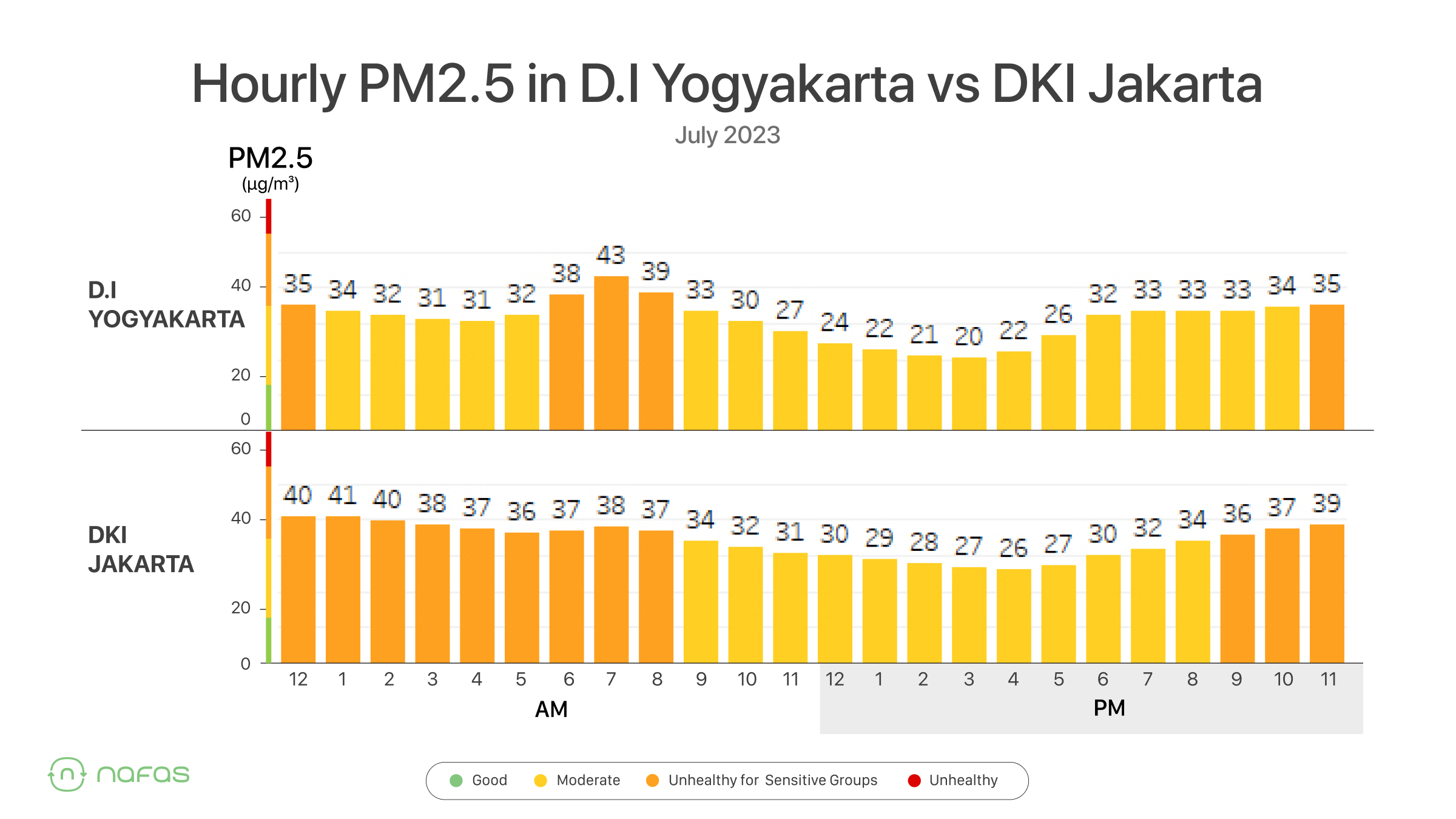
Apparently, the 'unhealthy' air quality in Yogyakarta occurs mostly in the morning. Although the percentage of time with unhealthy air quality in Yogyakarta is shorter than in Jakarta, it's still important to protect yourself from exposure to air pollution during these times. Respiratory problems due to PM2.5 exposure can happen to anyone, right? ☺️
How is the air quality in other areas of Yogyakarta?
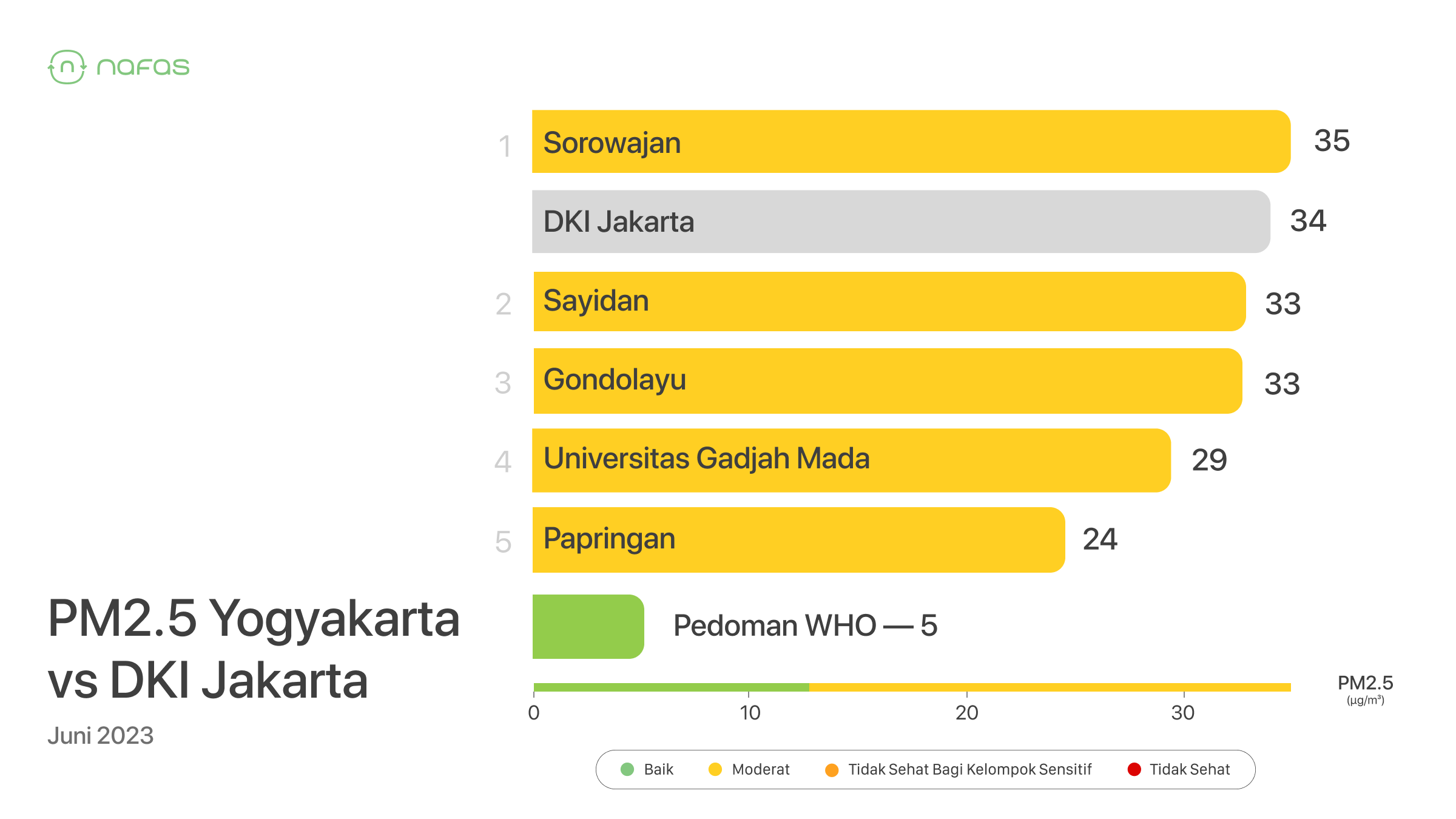
From the data above, it can be seen that Sorowajan is the area in Yogyakarta with the highest amount of PM2.5 compared to other areas, including DKI Jakarta. The best air quality is seen in the Papringan area.
Now let's take a look at three areas in Yogyakarta with high pollution levels: Sorowajan, Sayidan, and Gondolayu 👀
🏘️ Sorowajan
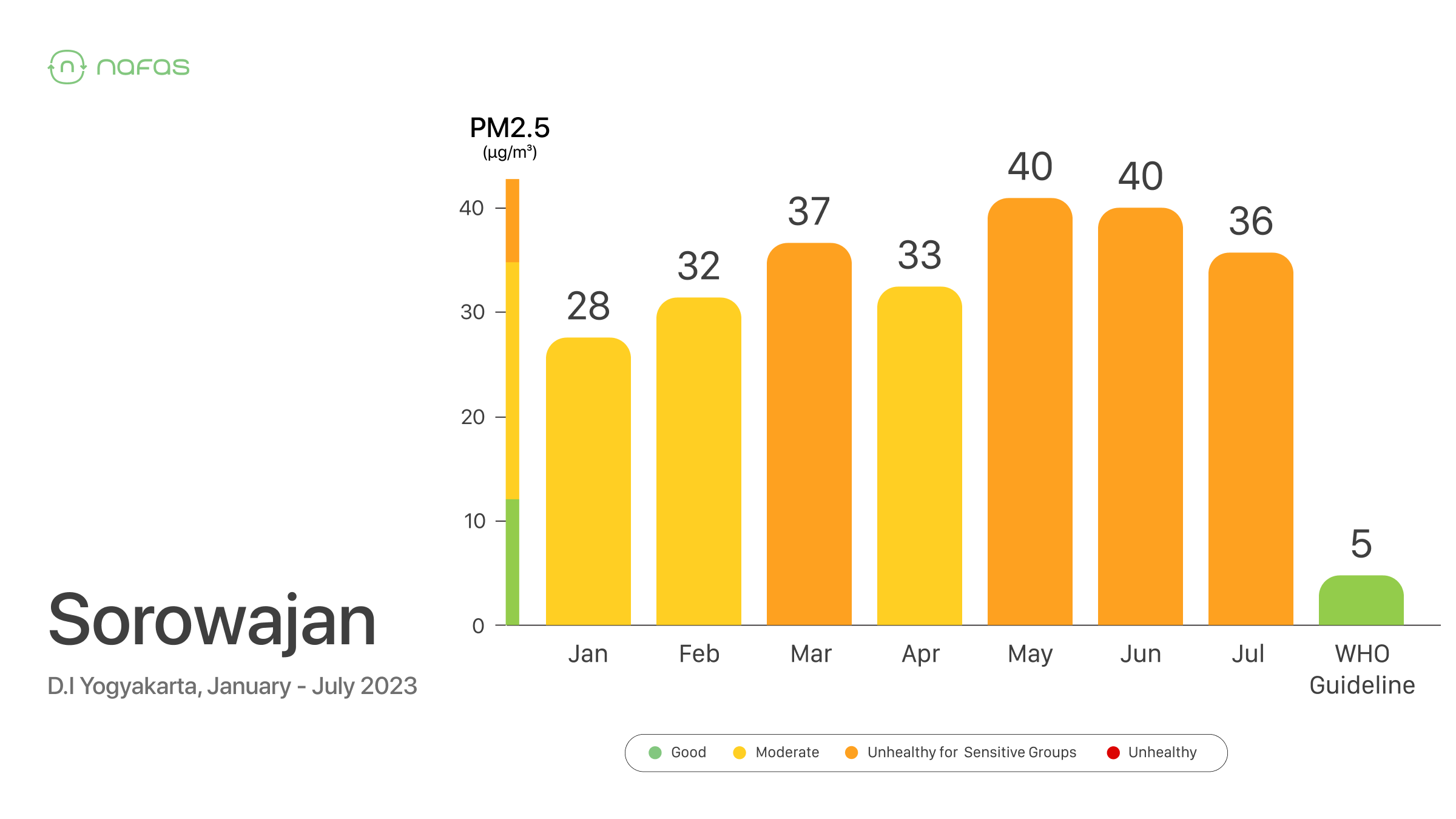
An increase in air pollution was seen from February to June 2023. In July, the amount of air pollution fortunately started to decrease, but it is still in the 'Unhealthy for Sensitive Groups' category.
🏘️ Sayidan
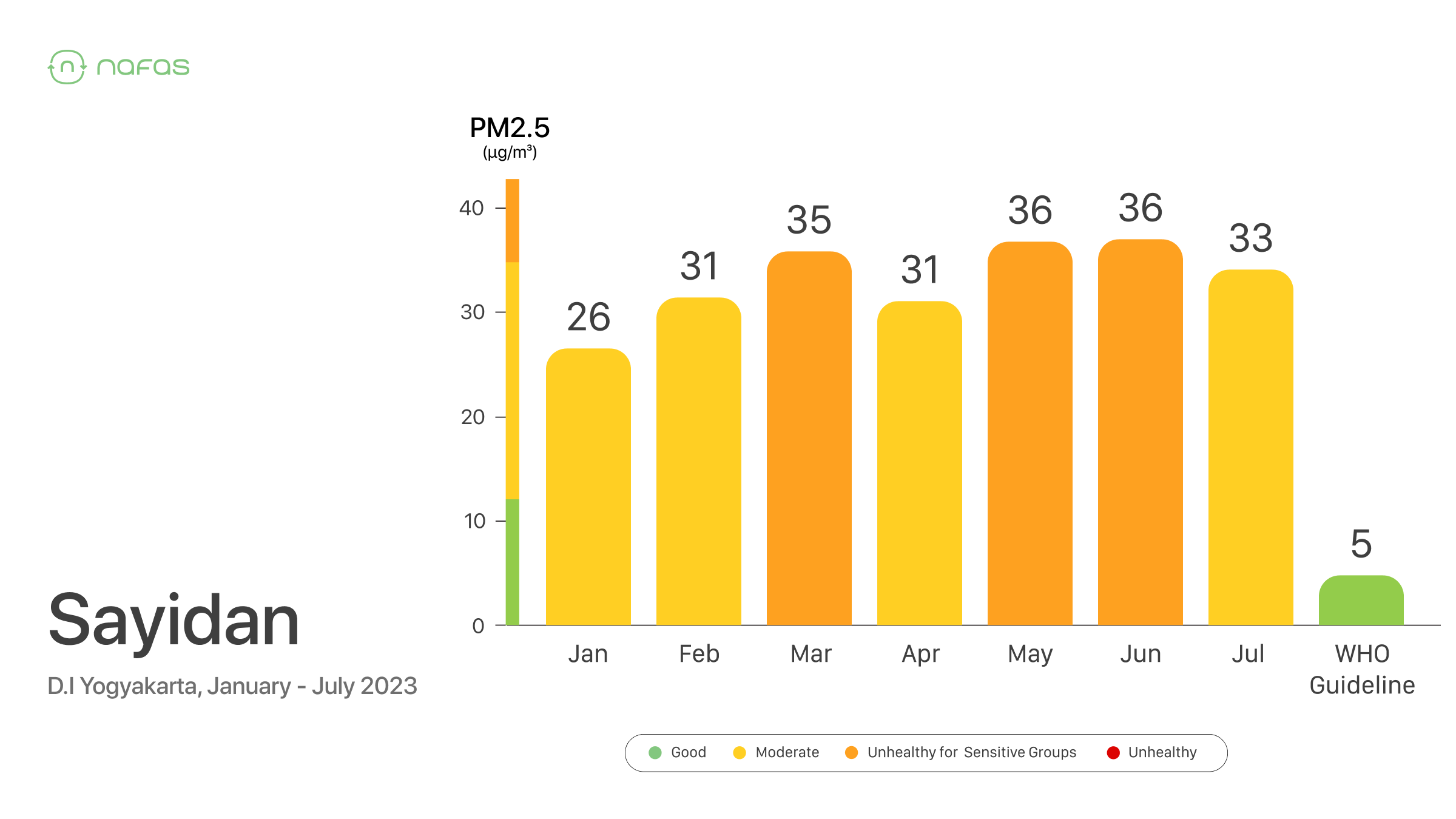
Pollution levels in Sayidan are slightly lower than Sorowajan, but they have similar trends. The best air quality occurs in January. Subsequently, the air deteriorated, with PM2.5 concentrations always exceeding 30 µg/m3.
🏘️ Gondolayu

In general, Gondolayu has better air quality than the previous two areas (Sorowajan and Sayidan). In this area, there are 4 months where the average air quality is moderate, from January to April and July. Unfortunately, in May and June, the monthly PM2.5 pollution increased drastically to consistently 7x above the WHO annual exposure limit (5 µg/m3)!
⚠️ Piyungan landfill closure contributes to the changes of air quality Yogyakarta
The Yogyakarta Regional Secretary announced the temporary closure of the Piyungan landfill from July 23 to September 5, 2023. Reportedly, the Piyungan landfill, which has been accommodating waste from Yogyakarta residents, has exceeded its capacity so it must be temporarily closed. Indirectly, this closure is one of the factors that increase air pollution in Yogyakarta. The closure of Piyungan landfill has apparently triggered residents to burn their own waste illegally, worsening the air quality in the surrounding environment.
The changes in air quality in Yogyakarta since before and after the closure of the Piyungan landfill can be seen in the graph below!👀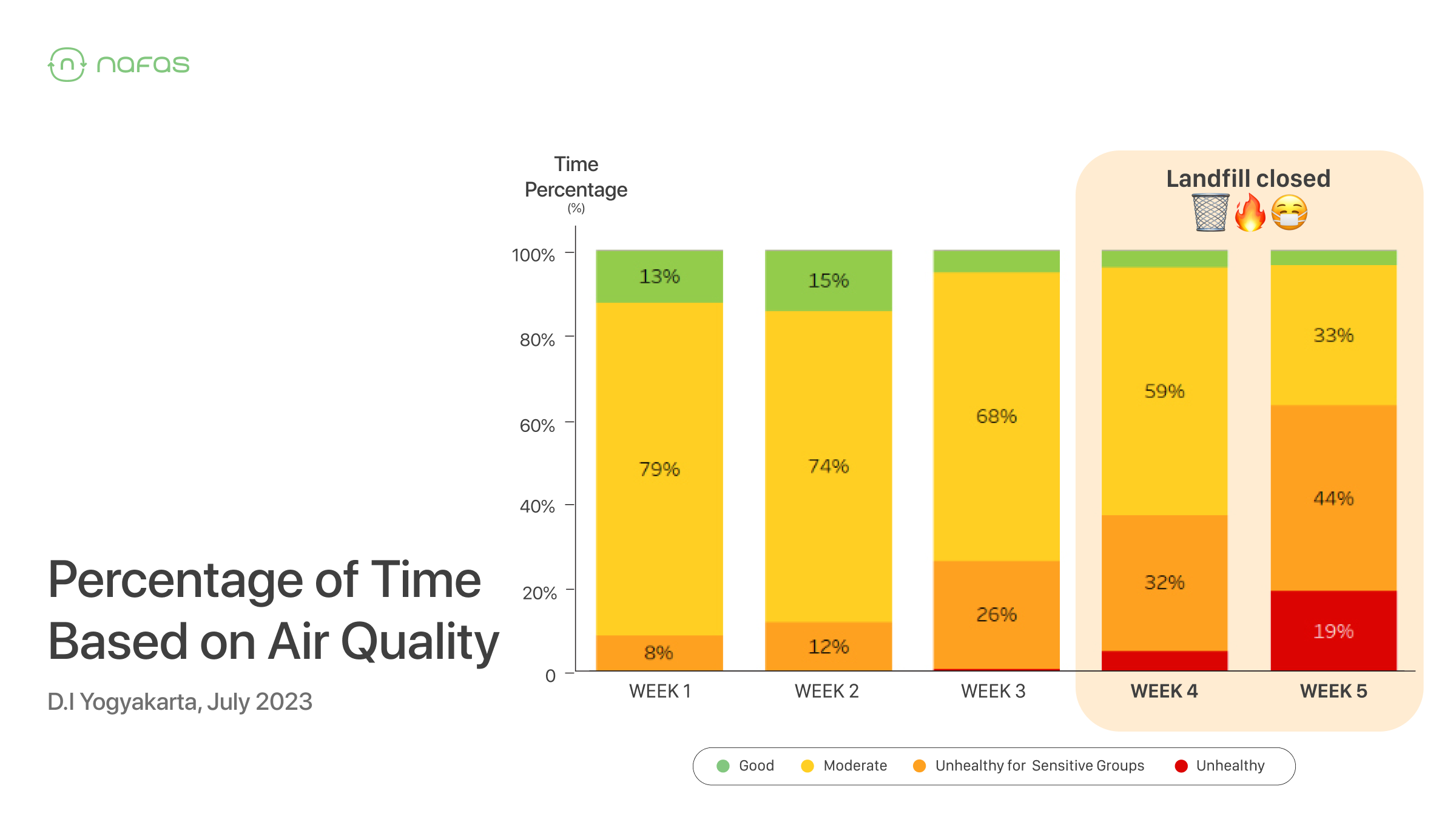
In the early weeks of July, Yogyakarta's air quality tended to be good. However, conditions slowly changed since the closure of the Piyungan landfill in the fourth week, or precisely on July 23. The worsening air quality was characterized by an increase in the number of days with unhealthy air quality. This shows that waste burning is one of the hyperlocal pollution sources that can significantly change air quality. If just one person burns trash, the resulting smoke and PM2.5 can spread and travel tens of kilometers. Imagine how bad the impact would be if it was done by many people in different areas!
While waiting for the ideal waste management solution from the government, there is nothing wrong if we as citizens also start learning to manage waste independently, or even reduce waste generation itself. This can be done by using reusable bags when shopping, bringing our own cutlery, and reusing reusable packaging. Separating organic waste from inorganic waste, and composting as a management of organic waste can also be done to help reduce the burden of waste in the landfill.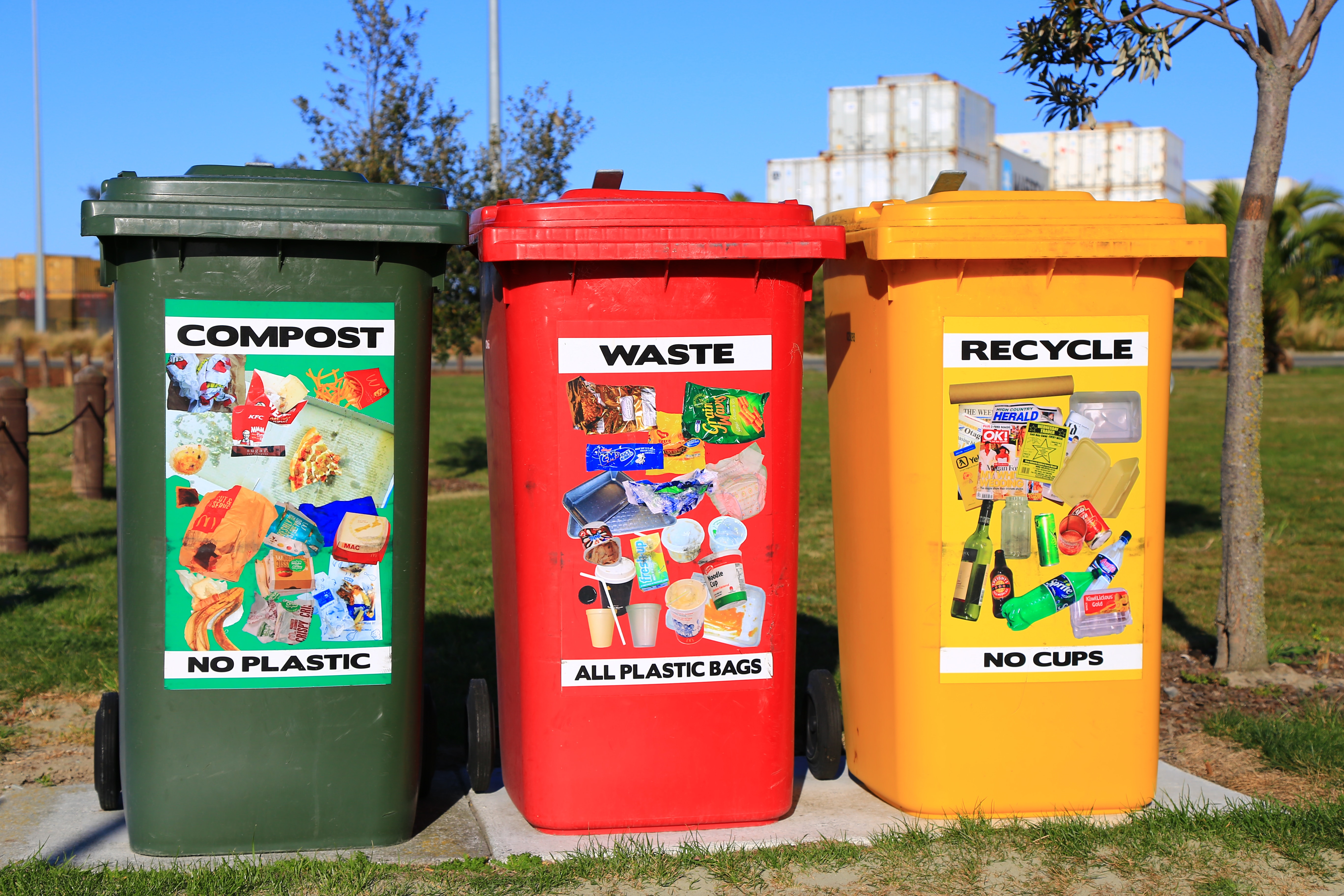
😷 Can we reduce our exposure to air pollution?
We are aware that air pollution is always around us and difficult to predict. Therefore, precautions should be taken to reduce the risk of illness. Here are some tips that can be done to reduce exposure to air pollution:
1. Monitor air quality regularly on the Nafas app
2. If the air quality is poor, avoid outdoor activities.
3. Always wear a mask when going out. [Dr. Citra Amelinda] "Children over 2 years old can wear a mask (cloth mask or disposable mask) that fits over the nose and mouth." - dr. Citra Amelinda]
4. Close doors and windows when air quality is poor. Using an air purifier can help clean the air in the room.